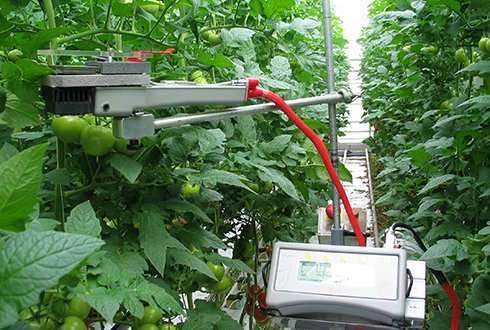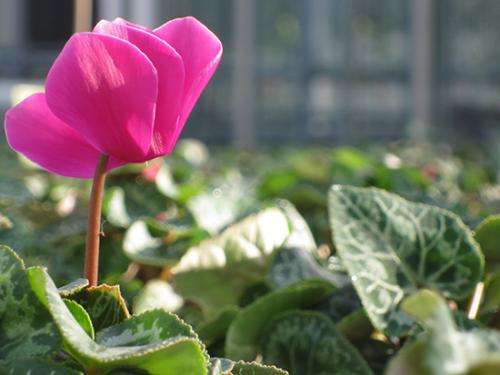Combatting diseases in the greenhouse before they become visible

A camera that maps photosynthesis, a DNA test that can measure the slightest traces of pathogens, or a precision spray system that only affects the plant and not the surrounding air… The Gezonde Kas ('healthy greenhouse') project has, over the last four years, allowed for the development of a sophisticated system of monitoring and disease control. It is now ready for practical applications, says Wageningen UR project leader Carolien Zijlstra. "The strength of the system is that we can detect problems before they become apparent."
Charting stress
One of the cornerstones of the Gezonde Kas system is a so-called chlorophyll fluorescence camera, which measures photosynthesis at the level of the crop. "The images of this CF camera allow us to see whether a plant is under stress," Zijlstra explains. "It does so by detecting a reduction in photosynthetic activity. It is fully automated and moves around the greenhouseobserving the plants. When this is done in the night, the following morningan impression of the plants in the greenhouse that are having difficulties for whatever reason can be generated."
DNA test
"Of course, it's only useful to know if a plant is under stress if you can also find out where the stress comes from," Zijlstra adds. "This is why a system was also developed within the project that tracks down the nature of any pathogens in the plants identified as being under stress via the DNA. This monitoring is done at the level of individual plants."
Avoid spraying between plants
To measure and know is only half the story: it is important to also take action. "If you know at a very early stage that there are traces of pathogens in a crop, you are often better able to deploy effective biological [E1] control[ZC2] methods or alternative measures," Zijlstra states. "And if it still proves necessary to use chemicals as a last resort, we developed an automatic spray system within the project that detects whether the nozzle is facing a plant or empty intermediary space. This allows us to halve the normal amount of pesticides used."

Mapping the greenhouse climate
The Gezonde Kas project has also developed a system that maps environmental factors such as humidity and temperature throughout the greenhouse. Both moisture and temperature can influence the development of pests and diseases. Checking that the climate is optimal can therefore be useful says Zijlstra. "While the high-tech CF camera is especially interesting for larger growers or partnerships, we anticipate that the monitoring of the climate in a greenhouse will be useful for a much wider group of horticulturists."
Outward
The scientists in the Gezonde Kas project expect that their approach will eventually be applied outside the greenhouse, too, according to Zijlstra. "A truly 'healthy greenhouse' requires a sophisticated combination of measurements on different scales followed by various measures in terms of management. Such a combination is greater than the sum of its parts, and can also be deployed in other growing systems."
Provided by Wageningen University



















